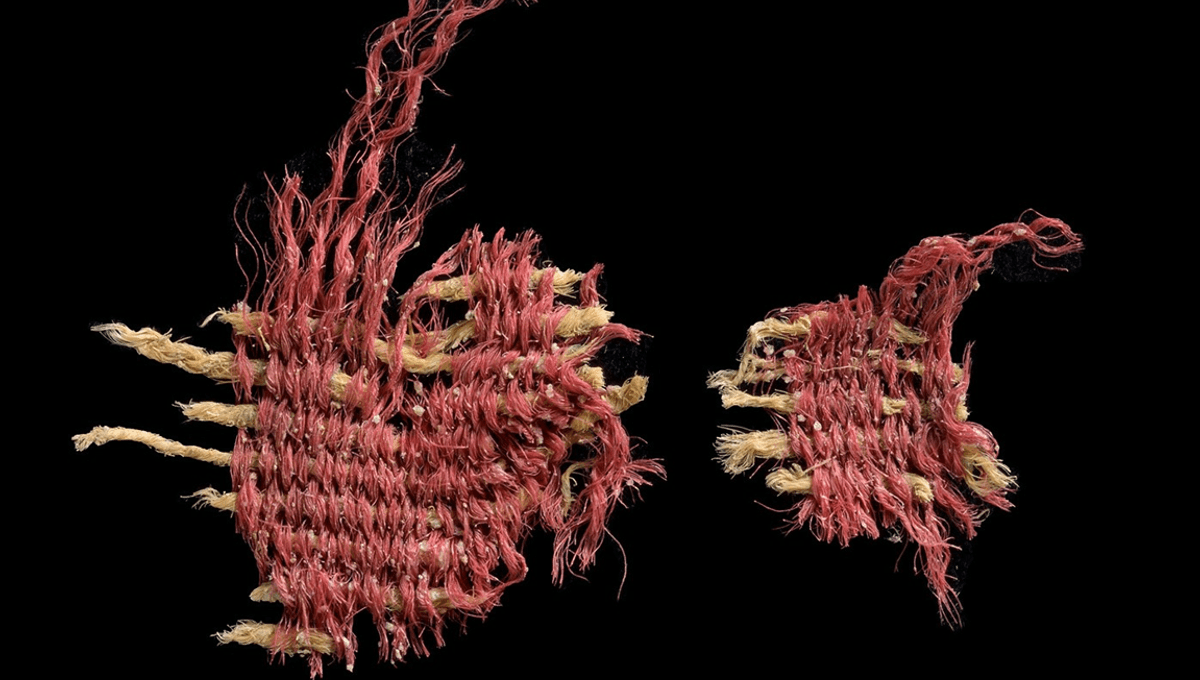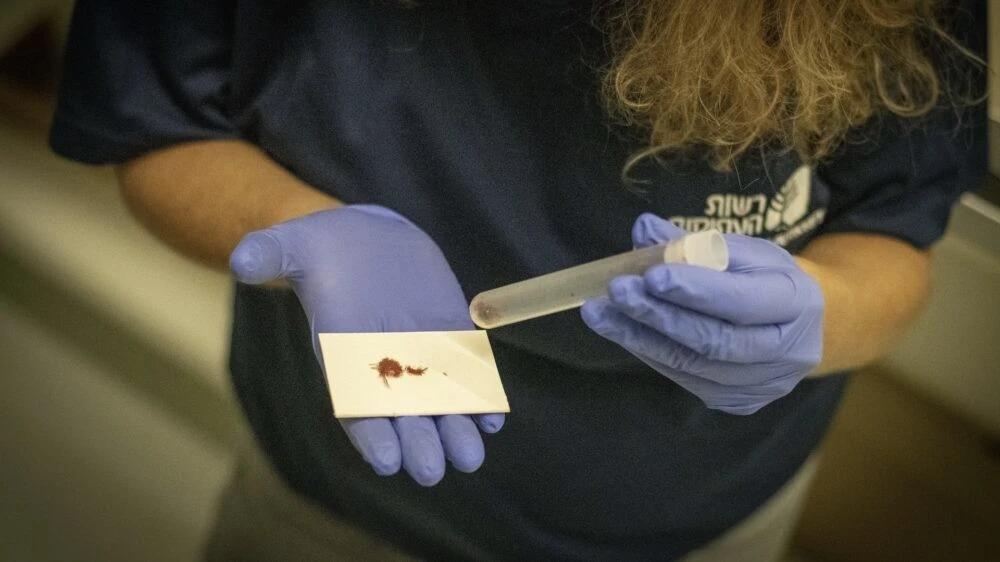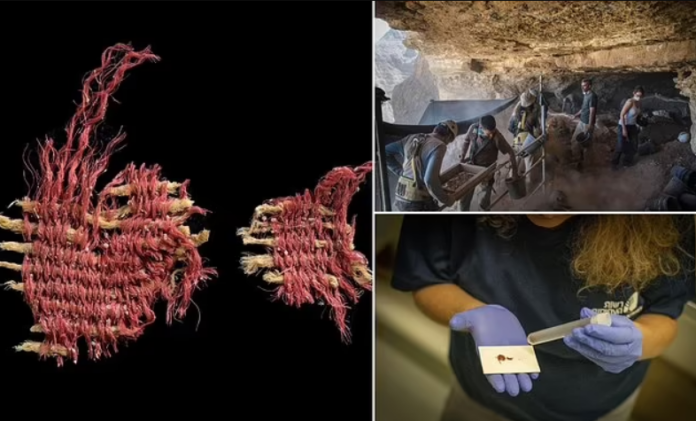Archaeologists have made a remarkable discovery in Israel’s Judean Desert, unearthing a rare artifact that is mentioned numerous times in the Old Testament of the Bible. This significant find sheds new light on ancient textile dyeing practices and the historical symbolism of the color red. The artifact, a 3,800-year-old textile, was colored with a dye known as ‘scarlet worm,’ which holds deep biblical significance.
Discovery in the ‘Cave of Skulls’

The Israel Antiquities Authority (IAA) announced the discovery of the textile in the ‘Cave of Skulls.’ Measuring less than two centimeters, the textile features woolen threads dyed red with the ‘scarlet worm’ dye, interwoven with uncolored linen threads in a lattice-like design. This find is particularly noteworthy as the dye is mentioned 25 times in the Bible’s Old Testament.
The Process of Dyeing with Scarlet Worm
The red dye, derived from the carcasses and eggs of a scale insect known as Kermes, was historically significant for its vibrant hue. The females and their eggs produce carminic acid, which gives the dye its distinct red color. The process involved collecting the insects, sprinkling them with vinegar, drying the carcasses, and grinding them into a powder to dye garments and textiles.
Biblical Significance of Scarlet Dye

The scarlet dye, known in Hebrew as shani or tola’at shani, features prominently in the Old Testament. For example, Leviticus 14:16 mentions the use of scarlet in purification rituals: “As for the living bird, he shall take it, and the cedar wood, and the scarlet, and the hyssop, and shall dip them and the living bird in the blood of the bird killed over the running water.” Similarly, Exodus 26:1 describes the use of scarlet yarn in the construction of the tabernacle: “Make the tabernacle with ten curtains of finely twisted linen and blue, purple and scarlet yarn, with cherubim woven into them by a skilled worker.”
Historical and Archaeological Context

The use of Kermes dye is well-documented in ancient texts and trade documents. The Stockholm papyrus, dating between 200 and 100 BC, includes recipes for dyeing with Kermes. Ancient trade documents, such as cuneiform tablets from Mesopotamia dating back to 1425 BC, also reference this dye. The newly discovered textile in Israel is a testament to the historical and commercial significance of Kermes dye.
Analysis and Findings

Researchers used high-performance liquid chromatography (HPLC) to analyze the textile, identifying the presence of kermesic acid. Carbon-14 analysis dated the textile to the Middle Bronze Age (1767-1954 BC). Dr. Naama Sukenik from the IAA explained that this advanced method pinpointed the dye’s origin to a species of Kermes vermilio, which produces kermesic acid. Professor Zohar Amar of Bar-Ilan University noted the impressive zoological knowledge demonstrated in ancient texts, which accurately described the dye-producing insects.
Conclusion
The discovery of this rare textile in the ‘Cave of Skulls’ bridges the gap between historical texts and archaeological evidence, highlighting the advanced state of the ancient textile dyeing industry. The artifact not only underscores the significance of scarlet dye in biblical and ancient contexts but also reveals the existence of broad international commercial networks. This find provides invaluable insights into the elite societies of the past and their sophisticated trade practices.
